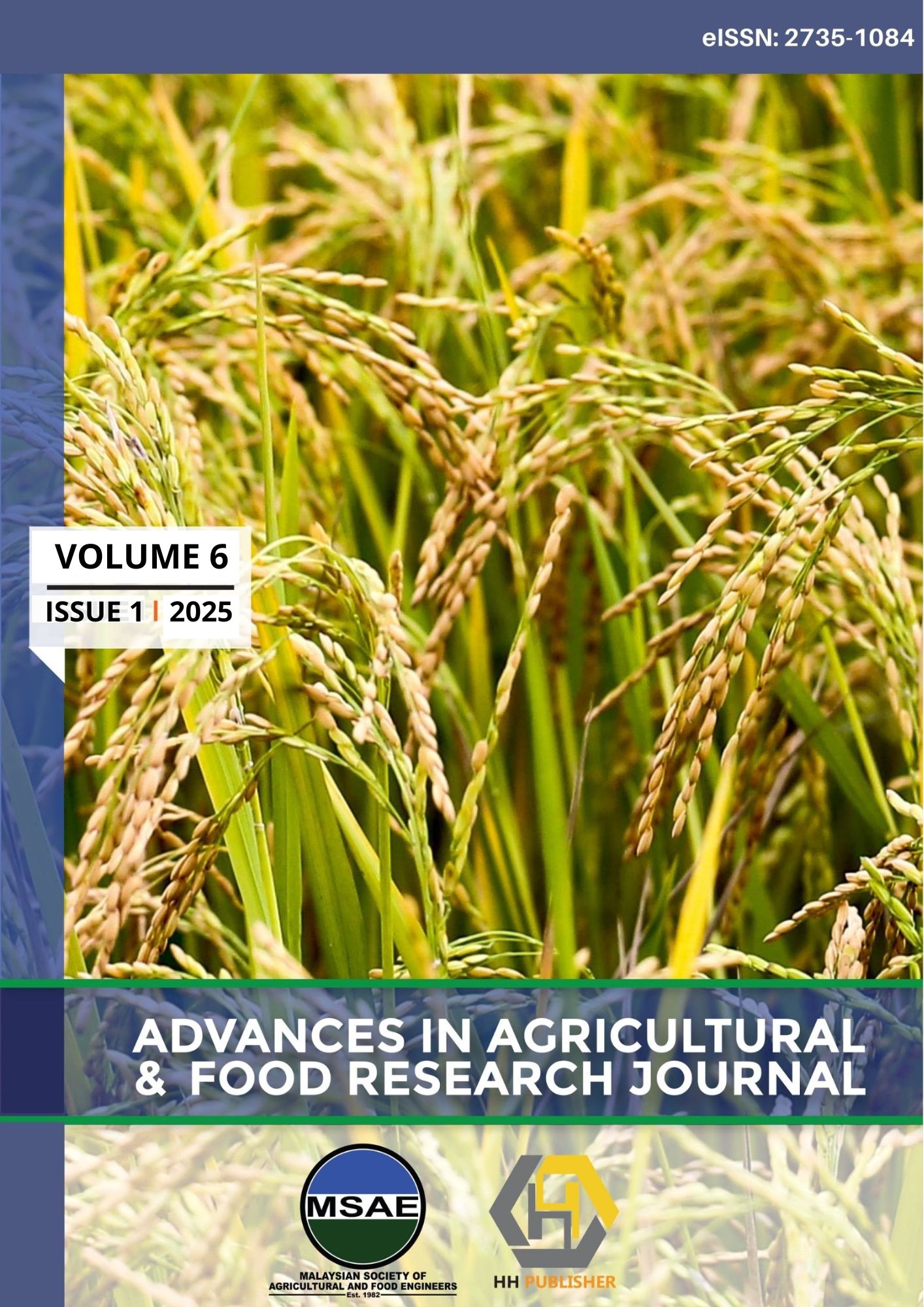Biogenic Synthesis of Silver Nanoparticles using Polygonum minus Fresh and Dried Leaves Extract and Its Antibacterial and Antioxidant Properties
DOI:
https://doi.org/10.36877/aafrj.a0000554Abstract
Research reveals that techniques for producing silver nanoparticles through plant-mediated synthesis exhibit potent antimicrobial properties. The purpose of this work is to evaluate the antibacterial capabilities of silver nanoparticles made with leaf extract from Polygonum Minus (Kesom) as the reducing agent. The visual color changes observed the formation of PM-AgNPs and UV-Vis Spectrophotometry was used to validate the production of PM-AgNPs, displaying an absorption peak at about 440 nm. Subsequent characterization using X-ray diffraction (XRD) analysis and Fourier Transform Infrared (FTIR) Spectroscopy revealed the presence of biomolecules from the leaf extract that were in charge of creating PM-AgNPs and determining their crystalline nature. Results from the disc diffusion showed that PM-AgNPs inhibited the growth of Gram-negative and Gram-positive bacteria.
Downloads
Published
How to Cite
Issue
Section
License
Copyright (c) 2025 Nurhanis Najihah Ibrahim, Nor Amaiza Mohd Amin, Roseliza Kadir Basha, Azhari Samsu Baharuddin

This work is licensed under a Creative Commons Attribution-NonCommercial 4.0 International License.
Author(s) shall retain the copyright of their work and grant the Journal/Publisher right for the first publication with the work simultaneously licensed under:
Creative Commons Attribution-NonCommercial 4.0 International (CC BY-NC 4.0). This license allows for the copying, distribution and transmission of the work, provided the correct attribution of the original creator is stated. Adaptation and remixing are also permitted.

This broad license intends to facilitate free access to, as well as the unrestricted reuse of, original works of all types for non-commercial purposes.
The author(s) permits HH Publisher to publish this article that has not been submitted elsewhere.

.png)

.jpg)




